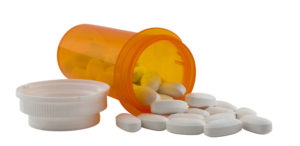 Americans take a lot of prescription drugs, so many that it has reached historic highs. 6.3 billion prescriptions were filled in 2020! According to a recent study, it appears that the number of prescription drugs a person takes over the life span will only increase.
Americans take a lot of prescription drugs, so many that it has reached historic highs. 6.3 billion prescriptions were filled in 2020! According to a recent study, it appears that the number of prescription drugs a person takes over the life span will only increase.
Research conducted by Jessica Y. Ho at Penn State University found that persons born in 2019 could be expected to take prescription drugs for about half their lives: 47.54 years for women and 36.84 years for men. Also, the number of years individuals can expect to take 5 or more drugs has increased substantially.
Some of the big increases in prescription drug use are from statins, antihypertensives, and antidepressants. There are ethnic and racial differences in prescription drug use, with non-Hispanic Whites taking the most.
From Science Daily: Americans will spend half their lives taking prescription drugs, study finds
An American born in 2019 will spend a larger share of their lifetime taking prescription drugs than being married or receiving an education, according to new research by Jessica Ho, associate professor of sociology and demography at Penn State. She found that American males will spend approximately 48% of their lives taking prescription drugs. The number jumped to 60% for females.
"As an American, I'd like to know what medications I'm putting in my body and how long I can expect to take them," said Ho, who is also an associate of Penn State's Social Science Research Institute. "The years that people can expect to spend taking prescription drugs are now higher than they might spend in their first marriage, getting an education or being in the labor force. It's important to recognize the central role that prescription drug use has taken on in our lives."
She found that the majority of American men are taking prescription drugs by age 40, while most American women are taking prescription drugs by age 15. On average, a newborn boy in 2019 could expect to take prescription drugs for approximately 37 years, or 48% of his life. A newborn girl in 2019 could expect to take them for approximately 47.5 years, or 60% of her life.
"We see that women start taking prescription drugs earlier than men do, and some of that is related to birth control and hormonal contraceptives," Ho said. "But it is also related to greater use of psychotherapeutic drugs and painkillers among women. If we consider the difference between men and women, excluding contraceptives would only account for about a third of the difference. The remaining two-thirds is primarily driven by the use of other hormone-related drugs, painkillers and psychotherapeutic drugs used to treat conditions such as depression, anxiety and ADHD."
Men, on the other hand, tend to take more statins and other medications to treat cardiovascular disease, explained Ho. But statin use varies across race and ethnicity, she said.
She also found that rates of polypharmacy, or when an individual takes five or more drugs at the same time, have risen to alarming levels. In the mid-1990s, most people taking prescription medications were on one drug. Today, individuals taking prescription medications are equally likely to be taking five or more medications, according to Ho.
The findings have implications for Americans' health and health care expenditures. Many of the drugs that individuals are on for 40 or 50 years have only been on the market for the past five decades, so their long-term effects on the body are still unknown, Ho said. Further, polypharmacy puts the individual at greater risk for drug interactions and adverse health outcomes, she said.
"This paper is not trying to say that use of prescription drugs is good or bad," Ho said. "Obviously, they have made a difference in treating many conditions, but there are growing concerns about how much is too much. There's a large body of research that shows Americans are less healthy and live shorter lives than our counterparts in other high-income countries. The prescription drug piece is part and parcel of that reality. What we find is, even above and beyond what we might expect to be seeing, the rates of prescription drug use in the United States are extraordinarily high."
